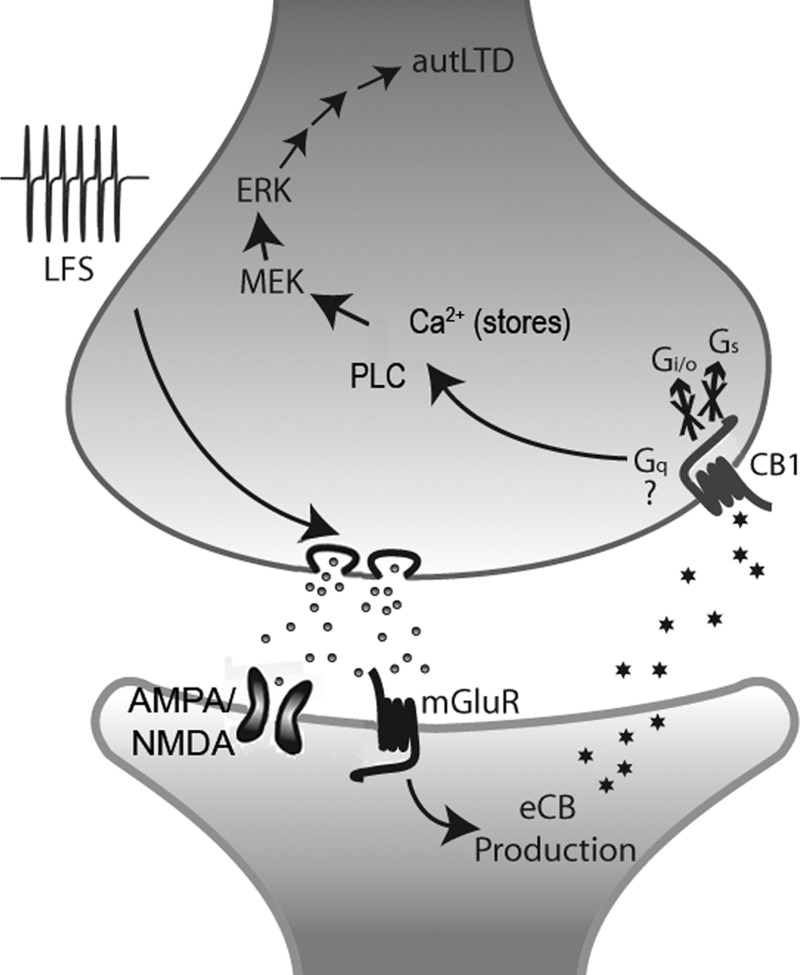FIG. 9.
Schematic representation of autLTD. Schematic representation of pre- (upper) and postsynaptic (lower) terminals of an autaptic hippocampal neuron with a hypothesized sequence of events leading to autLTD. Low-frequency stimulus (LFS) results in sustained release of glutamate, which acting postsynaptically on either or both metabo- and ionotropic glutamate receptors, produces endocannabinoids (likely 2-AG) via activation of DAG lipase. 2AG retrogradely crosses the synapse, activating presynaptic CB1 receptors. Approximately 3 min of CB1 receptor activation is then sufficient to induce autLTD via a nontraditional pathway independent of Gs or Gi/o G proteins. After this, CB1 receptors remain activated either because cannabinoids loiter presynaptically or because CB1 has been switched to a continuously active mode. Downstream of CB1, activation of Gq-proteins is most consistent given the requirements for PLC and filled calcium stores and represents a favored mode of action. Protein synthesis is required for autLTD while MEK (and presumably extracellular signal-regulated receptor kinase) activation are also needed, likely via PLC activation. The ultimate mode of action involves a reduction in presynaptic release probability.

